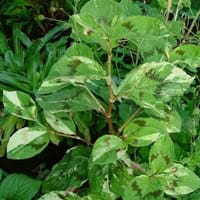Life Span
Biennial and Perennial
Perennial
Type
Vegetable
Herbaceous Perennial
Origin
Europe, Western Asia
North America, United States, Northeastern United States, Mid-Atlantic United States, Southeastern United States, Central United States, South-Central United States, Canada, Eastern Asia, India, Nepal, China, Japan, Korea
Types
Not Available
Not Available
Habitat
waste ground, wastelands
Cliffs, Moist woods, Riverbanks
USDA Hardiness Zone
4-9
5-9
Sunset Zone
A1, A2, A3, H1, H2, 1a, 1b, 2a, 2b, 3a, 3b, 4, 5, 6, 7, 8, 9, 10, 11, 12, 13, 14, 15, 16, 17, 18, 19, 20, 21, 22, 23, 24
2a, 2b, 3a, 3b, 4, 5, 6, 7, 8, 9, 14, 15, 16, 17
Habit
Rosette/Stemless
Upright/Erect
Flower Color
Yellow
Light Green
Flower Color Modifier
Bicolor
Bicolor
Fruit Color
Brown, Black
Dark Red, Copper
Leaf Color in Spring
Green
Green, Dark Green
Leaf Color in Summer
Green
Green, Dark Green
Leaf Color in Fall
Green
Dark Green, Dark Red
Leaf Color in Winter
Not Available
Not Available
Leaf Shape
Pinnate
Elliptic
Plant Season
Summer
Summer, Fall
Sunlight
Full Sun
Full Sun, Partial Sun
Type of Soil
Loam
Clay, Loam, Sand
The pH of Soil
Neutral
Acidic, Neutral
Soil Drainage
Well drained
Average
Bloom Time
Summer
Late Summer, Early Fall
Tolerances
Drought
Drought
Where to Plant?
Ground, Pot
Ground
How to Plant?
Seedlings
From Rhizomes, Seedlings
Plant Maintenance
Medium
Medium
Watering Requirements
Average Water Needs, Do Not over Water, Keep the ground moist but not water-logged
Keep ground moist
In Summer
Lots of watering
Lots of watering
In Spring
Moderate
Moderate
In Winter
Average Water
Average Water
Soil pH
Neutral
Acidic, Neutral
Soil Type
Loam
Clay, Loam, Sand
Soil Drainage Capacity
Well drained
Average
Sun Exposure
Full Sun
Full Sun, Partial Sun
Pruning
Remove damaged leaves, Remove dead branches, Remove dead leaves
In late autumn, Remove damaged leaves, Remove dead leaves
Fertilizers
All-Purpose Liquid Fertilizer
All-Purpose Liquid Fertilizer
Pests and Diseases
Aphids, Armyworm, Cutworms, Downy mildew, Pitch canker, Red blotch
Red blotch
Plant Tolerance
Drought
Drought
Flower Petal Number
Not Available
Not Available
Fragrant Bark/Stem
Yes
No
Foliage Texture
Fine
Medium
Foliage Sheen
Matte
Not Available
Attracts
Butterflies
Not Available
Allergy
Stomach burn
Not Available
Aesthetic Uses
Not Available
Not Available
Beauty Benefits
Blood purifying, Good for skin
Not Available
Edible Uses
Yes
Not Available
Environmental Uses
Air purification
Air purification
Medicinal Uses
Aphrodisiac
Not Available
Part of Plant Used
Root
Not Available
Other Uses
Food for animals, Used as a nutritious food item
Decorative veneers, flooring, paneling, Showy Purposes
Used As Indoor Plant
Yes
No
Used As Outdoor Plant
Yes
Yes
Garden Design
Edible, Herb, Vegetable
Wildflower
Botanical Name
PASTINACA sativa
PERSICARIA virginiana
Common Name
Parsnip
Jumpseed
In German
Pastinake
jumpseed
In French
Panais
jumpseed
In Spanish
Chirivía
jumpseed
In Greek
Είδος δαυκίου
jumpseed
In Portuguese
cherivia
jumpseed
In Polish
Pasternak
jumpseed
In Latin
parsnip
Salire celeritate
Phylum
Magnoliophyta
Tracheophyta
Class
Magnoliopsida
Magnoliopsida
Order
Apiales
Caryophyllales
Family
Apiaceae
Polygonaceae
Clade
Angiosperms, Asterids, Eudicots
Angiosperms, Core eudicots, Eudicots
Tribe
Not Available
Not Available
Subfamily
Not Available
Not Available
Number of Species
Not Available
Not Available
Season and Care of Parsnip and Jumpseed
Season and care of Parsnip and Jumpseed is important to know. While considering everything about Parsnip and Jumpseed Care, growing season is an essential factor. Parsnip season is Summer and Jumpseed season is Summer. The type of soil for Parsnip is Loam and for Jumpseed is Clay, Loam, Sand while the PH of soil for Parsnip is Neutral and for Jumpseed is Acidic, Neutral.
Parsnip and Jumpseed Physical Information
Parsnip and Jumpseed physical information is very important for comparison. Parsnip height is 15.20 cm and width 7.60 cm whereas Jumpseed height is 30.00 cm and width 60.00 cm. The color specification of Parsnip and Jumpseed are as follows:
Parsnip flower color: Yellow
Parsnip leaf color: Green
Jumpseed flower color: Light Green
- Jumpseed leaf color: Green and Dark Green
Care of Parsnip and Jumpseed
Care of Parsnip and Jumpseed include pruning, fertilizers, watering etc. Parsnip pruning is done Remove damaged leaves, Remove dead branches and Remove dead leaves and Jumpseed pruning is done In late autumn, Remove damaged leaves and Remove dead leaves. In summer Parsnip needs Lots of watering and in winter, it needs Average Water. Whereas, in summer Jumpseed needs Lots of watering and in winter, it needs Average Water.





